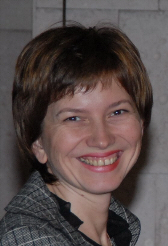THE SOCIOCULTURAL CONDIRTIONALITY OF FORMATION OF THE LANGUAGE COMPETENCE IN JUNIOR SCHOOLCHILDREN
Аннотация
Ключевые слова
Литература
Chernov D.N. Problemi reali dello studio dei condizionamenti socio-culturale disviluppo del linguaggio infantile. Italian Science Review, 2014, no. 4(13), pp. 357-360.
Bates E., Dale P., Thal D. Individual differences and their im-plications for theories of language development. The handbook of child language. -Oxford: Blackwell, 1995, pp. 96-151.
Речь ребенка: Проблемы и решения [Под ред. Т.Н. Ушаковой]. -М.: Изд-во «Институт психологии РАН», 2008. 352 с.
Tomasello M. The social bases of language acquisition. Social Development, 1992, vol. 1, no. 1, pp. 67-87.
Dionne G., Dale P.S., Boivin M., Plomin R. Genetic evidence for bidirectional effects of early lexical and grammatical development. Child Development, 2003, vol. 74, no. 2, pp. 394-412.
Hayiou-Thomas M.E. Genetic and biological pathways underpinning communication disorders across the lifespan genetic and environmental influences on early speech, language and literacy development. Journal of Communication Disorders, 2008, vol. 41, no. 5, pp. 397-408.
Price T.S., Dale P.S., Plomin R. A Longitudinal genetic analysis of low verbal and nonverbal cognitive abilities in early childhood. Research, 2004, vol. 7, no. 2, pp. 139-148.
Chaimay B., Thinkhamrop B., Thinkhamrop J. Risk factors associated with language development problems in childhood -a literature review. Journal of the Medical Association of Thailand, 2006, vol. 89, no. 7, pp. 1080-1086.
Schjølberg S., Eadie P., Zachrisson H.D., Oyen A.S., Prior M. Predicting language development at age 18 months: data from the Norwegian Mother and Child Cohort study. Journal of Developmental and Behavioral Pediatrics, 2011, vol. 32, no. 5, pp. 375-383.
Sidhu M., Malhi P., Jerath J. Multiple risks and early language development. Indian Journal of Pediatrics, 2010, vol. 77, no. 4, pp. 391-395.
DOI: https://doi.org/10.12731/wsd-2014-9-14
Ссылки
- На текущий момент ссылки отсутствуют.
(c) 2016 В мире научных открытий
ISSN 2658-6649 (print)
ISSN 2658-6657 (online)






